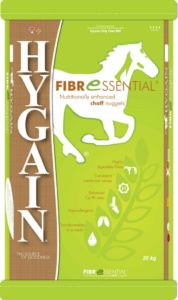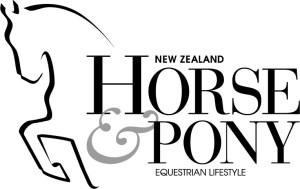
Forage, such as hay and pasture, is critical for your horse’s health and wellbeing. Understanding how the horse’s digestive system is designed to function and its reliance on forage is the first step in appreciating its critical value. All horse owners need knowledge of what’s in various forages, the types and the quality. Understanding how much forage a horse requires daily is essential in feeding any horse.
The equine digestive system
The horse’s digestive system is unique, and its structure and function are perfect for forage utilisation. Horses evolved on a high fibre, plant-based diet; spending 16 to 18 hours grazing per day. Fibre is the plant cell wall material which consists of cellulose, hemicellulose, lignin and pectin. It is largely indigestible, as animals lack the necessary enzymes to break down fibrous material. However, the microbial population in the horse’s hindgut (large intestine) is able to break down (ferment) fibre, converting it into energy. Although lignin is completely indigestible, these microorganisms can partially digest cellulose and hemicellulose, and digest practically all pectin, mainly producing energy-yielding compounds called volatile fatty acids (VFAs). The horse’s hindgut is the largest area of the digestive system, making up over 65% of the digestive capacity. With this gastrointestinal tract designed to digest fibre, it is easy to see why forage is critical to the health of all horses.
What’s in forage?
Forage contains all of the essential nutrients required by horses: water, energy, protein, vitamins and minerals.
- Water. Pasture contains large amounts of water whereas preserved forages such as hay and chaff have been dried to prevent mould growth while in storage.
- Protein. The protein content is highest in legumes such as lucerne and clover, lower in grasses and lowest in oat or wheaten chaff.
- Fat. Forage contains a small amount of fat which is high in omega-3 fatty acids.
- Fibre. Fibre is the main component of forage. Not all of the fibre in forages is digestible, with an overall estimate of digestibility ranging from 40 to 50%.
- Minerals. A number of important minerals such as calcium, phosphorus, potassium, copper, zinc, selenium and others are present. The mineral content of forage tends to be higher in legumes than grasses, but is dependent on soil conditions where the plants were grown.
- Vitamins. The vitamin content of green forages is higher compared to sun-bleached or weather-damaged forage.
Forage types and physical forms
Forage comes in many different types and physical forms but in general, they can be divided into two types: legumes and grasses.
Legumes are plants such as lucerne and clover. Generally, they provide more energy and have a higher protein and mineral content (especially calcium) than grasses. Legume forages are best suited for horses with higher nutrient requirements such as equine athletes, broodmares and growing horses.
Grasses that are fed to horses include many different species. The individual species of grass are further divided into those which grow well in colder climates – cool season grasses (eg. rye grass, orchard, oat and wheat) and those that grow well in hotter climates – warm season grasses (eg. kikuyu). Grasses typically contain less protein and more fibre compared to legume forages. Grass forages, because of the lower energy content, may be better suited to horses that gain weight easily or for pleasure horses.
 Alternative forms of roughage include soy hulls, lupin hulls and beet pulp, which are highly digestible as opposed to traditional forms of roughage mentioned above. These alternative fibre sources are based on soluble fibres, also known as super fibres, that provide digestible energy between that of good quality hay and grains. Super fibres offer an alternative energy source with less starch and sugar. Traditional fibre sources such as hay and chaff (insoluble) are poorly utilised, which often means that horse owners are required to feed more starches and sugars in the form of grain in order to meet the horse’s energy requirements. Hence, to increase the digestibility of the roughage being fed, we must incorporate more digestible fibre
Alternative forms of roughage include soy hulls, lupin hulls and beet pulp, which are highly digestible as opposed to traditional forms of roughage mentioned above. These alternative fibre sources are based on soluble fibres, also known as super fibres, that provide digestible energy between that of good quality hay and grains. Super fibres offer an alternative energy source with less starch and sugar. Traditional fibre sources such as hay and chaff (insoluble) are poorly utilised, which often means that horse owners are required to feed more starches and sugars in the form of grain in order to meet the horse’s energy requirements. Hence, to increase the digestibility of the roughage being fed, we must incorporate more digestible fibre  sources into the diet such as soy hulls, lupin hulls and beet pulp. Combining these fibre sources into a nugget or cube makes them most convenient and efficient to feed and that is why HYGAIN® developed HYGAIN® FIBRESSENTIAL®, a revolutionary fibre source consisting of soluble fibres in the form of an extruded nugget.
sources into the diet such as soy hulls, lupin hulls and beet pulp. Combining these fibre sources into a nugget or cube makes them most convenient and efficient to feed and that is why HYGAIN® developed HYGAIN® FIBRESSENTIAL®, a revolutionary fibre source consisting of soluble fibres in the form of an extruded nugget.
Forage quality
The main factors that influence the quality of forage are: the species of plant, its stage of maturity and the geographic location where the plant was grown. The inside of plant cells consists of protein, fat and soluble carbohydrates (cell contents) whilst the outside (cell wall) consists of fibre. The inside of the cell is highly digestible (80-100%) while the cell wall is more limited (40-50%). The more mature (older) a plant becomes, or the taller it grows, the smaller the proportion of cell contents and the larger the cell wall. As plants mature, their digestibility and quality decreases. Due to the high fibre content of mature plants, they proportionally contain less energy, protein, vitamins and minerals. Pastures often become less digestible in mid-summer and autumn due to the plants becoming tall and mature.
Different geographic regions contain soils with different nutrient densities. The nutrient content of the soil is reflected in the nutrient content of the plant. For example, plants grown in nutrient deficient soil will also be nutrient deficient and of lower quality.
Forage quality can be determined to a limited extent by looking at:
- The leaf to stem ratio,
- length of the seed head,
- colour of the plant,
- presence of dust or mould.
Higher quality hays will have more leaves than stems, a short seed head, be green in colour, and smell fresh with no dust or mould. A more accurate evaluation of forage quality can be acquired by laboratory analysis.
How much forage should be fed?
Forage is the safest dietary ingredient that can be fed to horses. Horses require an absolute minimum of 1% of their body weight in forage per day; so for a 500kg horse this equates to just 5kg of forage per day. Racehorses are the only horses that would get down to this minimum amount of forage. A safer guideline is to provide horses with a minimum of 1.5% of their body weight in dry forage per day, which equates to 7.5kg of dry forage per day for a 500kg horse.
So, how much forage will a horse eat? Maximum voluntary feed intake is 2 – 2.5 % of body weight in dry forage per day, which is up to 12.5kg of dry forage per day for a 500kg horse. When given free access, horses spend more time chewing and thus produce more saliva. As saliva contains bicarbonate, a buffering agent, it may reduce the stomach’s acidity, reducing the risk of acidosis and related disorders like ulcers.






